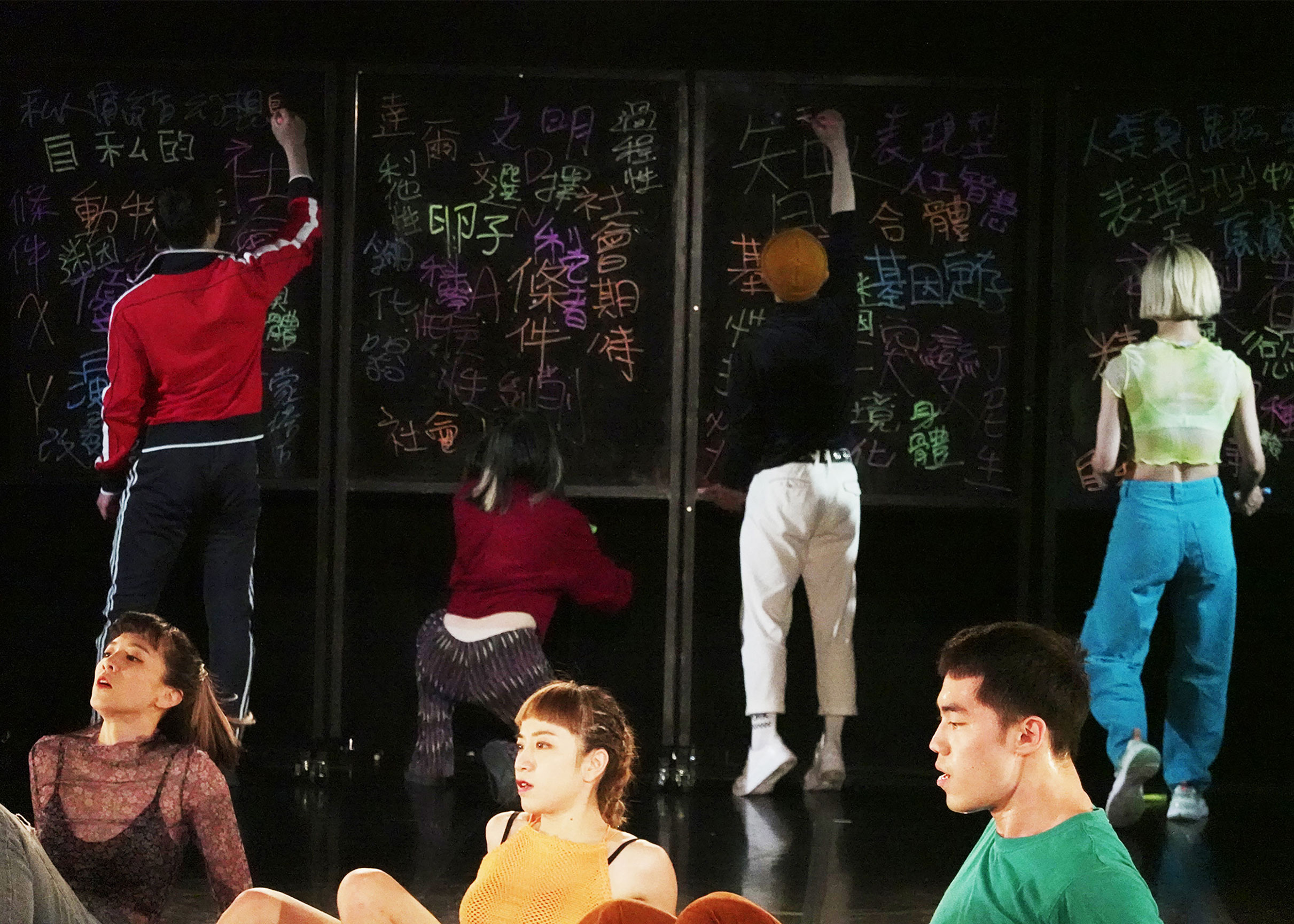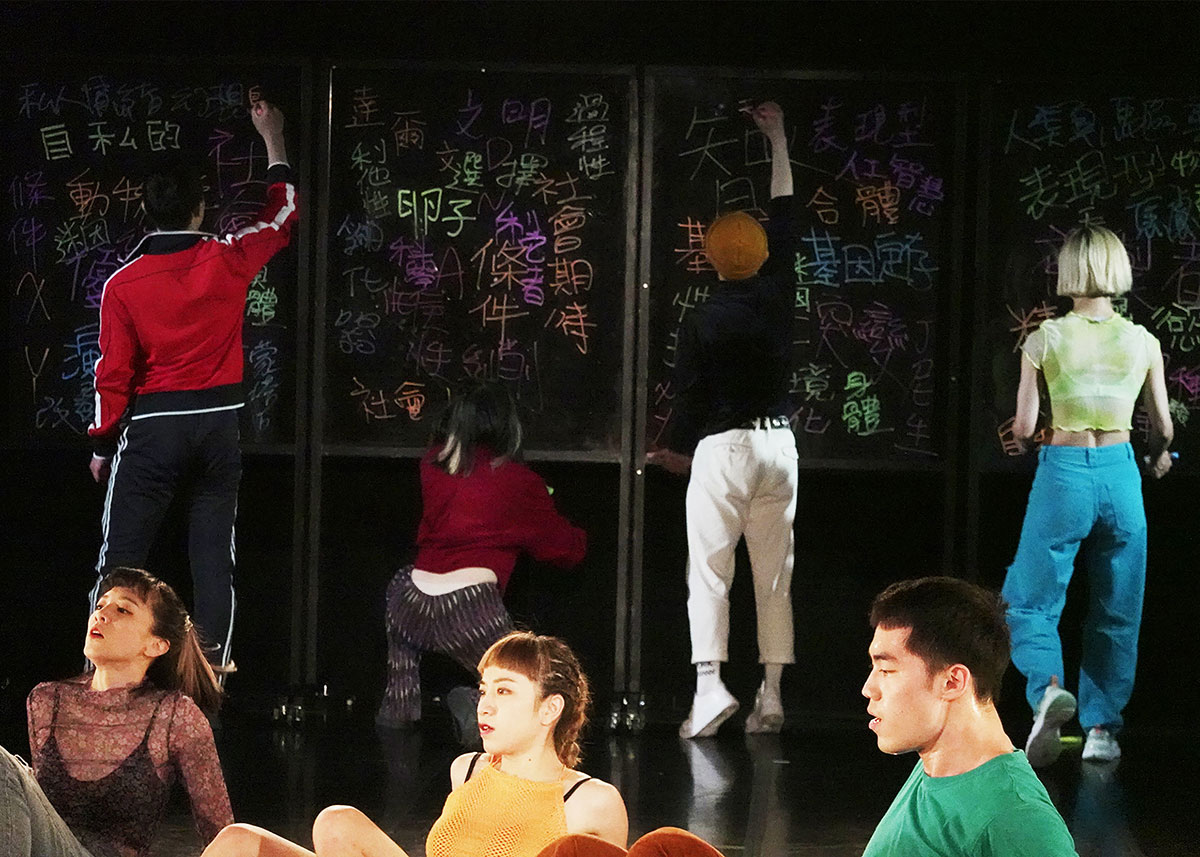TUNG I-Fen

MY BODY MY STORY
- 2021/2022, single-channel video, mixed media, sound/lighting installation.
- Dimensions variable.
- Courtesy of the artist. Photo credit: Lee Yi-Hsuan.
Curatorial Perspective
Bodies flowing within a space are like displays of archived materials, carrying traces left behind or erased by history. In archive form, MY BODY MY STORY (2022) re-presents a production of the same name, commissioned by Dance Forum Taipei, that premiered in 2021. This theater work was jointly developed by choreographer Tung I-Fen, dance dramaturg Lee Tsung-Hsin, and dancers from Dance Forum Taipei. Bodies, sounds, and documents are presented side by side in archive form to explore the associations between the body and history from material, cultural, and social perspectives. This work tackles the collective amnesia of Taiwanese people – family histories in which people have forgotten their roots. It begins from micro-biopolitics to explore macrocosmically topics of colonization and decolonization. Surpassing personal history of bodily training, the work pushes towards a deeper level, and explores the identity of and mutism in Taiwanese society. The artist and dancers start with a field study of their own family history by interviewing family elders about family anecdotes and stories, through which they re-discover the codes to their bodily movements. Moreover, in a way similar to art therapy, they re-enacts snippets of their family stories through narrating and painting. In the beginning and ending of the choreography, a singular dancer emerges from mysterious, sacred light (the ancient image of homo sapiens), and the lone figure is set off by the movements of other dancers. In the ending, the neon words on the transparent panel reveal multilayered and mesmerizing human bodies under the ingenious blue lighting, forming a “multitude” comprising plural “individuals.” Through such a metaphor of vivid imagery, the work reveals the memory inscribed on one’s body, while interweaving together Taiwanese colonial history, biopolitics, as well as the entanglement of the national body and personal bodies.
Creation Description
Bodies flowing within a space are like displays of archived materials, carrying traces left behind or erased by history. In archive form, MY BODY MY STORY (2022) re-presents a production of the same name, commissioned by Dance Forum Taipei, that premiered in 2021. This theater work was jointly developed by choreographer Tung I-Fen, dance dramaturg Lee Tsung-Hsin, and dancers from Dance Forum Taipei. Bodies, sounds, and documents are presented side by side in archive form to explore the associations between the body and history from material, cultural, and social perspectives. In 2022, this work is re-created in exhibition form for the Taiwan Biennial. It is once again archived, such that the interweaving of body and history in theater form is repeated to construct history through the senses of viewers.
The body is at the core of history. History becomes history because the bodies of historians carry out conscious and unconscious actions. Receiving, reorganizing, writing, and even forgetting, they make history (Ricoeur, 2004). In other words, the body simultaneously "stores" and "forgets" historical events, and both actions work together to produce histories.
In the contemporary context, everyone can write the history from their own “bodily” perspective. In this work, Tung and Lee lead dancers in exploring the layers and meanings of the body, from genetics to sociobiology, oral histories of families, Taiwan’s dance history, and even their own physical training history, to present the composition and social meaning of the body based on what they have studied and thought about, as well as their personal choices and struggles about the future, while simultaneously pursuing those forgotten histories. As the meaning of the body changes, boundaries blur and extend. In different action contexts, the body constructs a network of meanings from external events and matters (Mol, 2013).
Whether in theater or exhibition form, MY BODY MY STORY (2021/2022) presents the layered and imagined relation between the body and history, enabling viewers to construct meaning through corporeal perceptions that are based on their experiences and histories. During the viewing process, through feelings, memories, and interpretations, viewers interweave remembered and forgotten histories, constructing the historical significance of their own bodies. That is, the interweaving of body and history continues through the bodies of participants.

